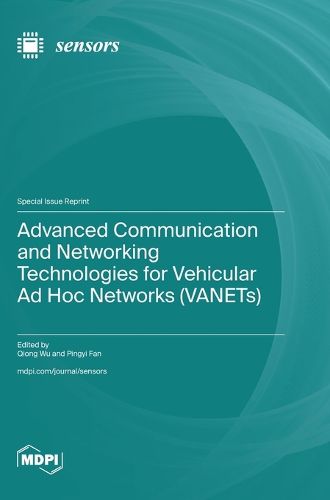Readings Newsletter
Become a Readings Member to make your shopping experience even easier.
Sign in or sign up for free!
You’re not far away from qualifying for FREE standard shipping within Australia
You’ve qualified for FREE standard shipping within Australia
The cart is loading…






This title is printed to order. This book may have been self-published. If so, we cannot guarantee the quality of the content. In the main most books will have gone through the editing process however some may not. We therefore suggest that you be aware of this before ordering this book. If in doubt check either the author or publisher’s details as we are unable to accept any returns unless they are faulty. Please contact us if you have any questions.
The application potential of vehicular ad hoc networks (VANETs) is extensive in various fields, such as autonomous driving, smart industry, vehicular networking and space technology. Despite the promising prospects, designing productive VANET systems may involve challenges. For example, communication networks must be fault-resistant in order to achieve reliable information distribution; data collection, processing and transmission may incur excessive delay and data loss, which would reduce the reliability of VANETs; ensuring the security and privacy of users in heterogeneous VANETs is not straightforward. With the newest developments in edge computing, 5G communication technologies, reinforcement learning, federated learning and other technologies provide effective solutions to these problems. The goal of this Research Topic is to focus on the security, reliability, resource optimization, sensor topology optimization, sensor information collection and analysis in VANET systems. We particularly welcome the achievements yielded by the investigation of novel communication and networking technologies in VANETs. This Research Topic invites novel contributions from academia and industrial sectors to research, develop and investigate the opportunities, challenges and solutions related to the implementation of innovative architectures, methods, approaches and technologies for VANETs.
$9.00 standard shipping within Australia
FREE standard shipping within Australia for orders over $100.00
Express & International shipping calculated at checkout
This title is printed to order. This book may have been self-published. If so, we cannot guarantee the quality of the content. In the main most books will have gone through the editing process however some may not. We therefore suggest that you be aware of this before ordering this book. If in doubt check either the author or publisher’s details as we are unable to accept any returns unless they are faulty. Please contact us if you have any questions.
The application potential of vehicular ad hoc networks (VANETs) is extensive in various fields, such as autonomous driving, smart industry, vehicular networking and space technology. Despite the promising prospects, designing productive VANET systems may involve challenges. For example, communication networks must be fault-resistant in order to achieve reliable information distribution; data collection, processing and transmission may incur excessive delay and data loss, which would reduce the reliability of VANETs; ensuring the security and privacy of users in heterogeneous VANETs is not straightforward. With the newest developments in edge computing, 5G communication technologies, reinforcement learning, federated learning and other technologies provide effective solutions to these problems. The goal of this Research Topic is to focus on the security, reliability, resource optimization, sensor topology optimization, sensor information collection and analysis in VANET systems. We particularly welcome the achievements yielded by the investigation of novel communication and networking technologies in VANETs. This Research Topic invites novel contributions from academia and industrial sectors to research, develop and investigate the opportunities, challenges and solutions related to the implementation of innovative architectures, methods, approaches and technologies for VANETs.